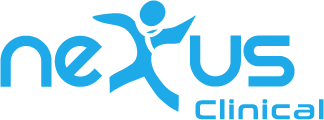
The Importance of EHR/EMR Interoperability in Healthcare Systems
- Interoperability has become a cornerstone of modern healthcare systems, revolutionizing the way Electronic Health Records (EHR) and Electronic Medical Records (EMR) are used to enhance care delivery.
The Importance of EHR/EMR Interoperability in Healthcare Systems
- Interoperability has become a cornerstone of modern healthcare systems, revolutionizing the way Electronic Health Records (EHR) and Electronic Medical Records (EMR) are used to enhance care delivery.

Interoperability has become a cornerstone of modern healthcare systems, revolutionizing the way Electronic Health Records (EHR) and Electronic Medical Records (EMR) are used to enhance care delivery. interoperability plays a critical role in ensuring that clinicians have access to the right information at the right time, empowering them to make informed decisions for their patients.
This article explores what EHR/EMR interoperability means in healthcare, its benefits for clinicians and patients, the mechanisms that enable it, and how organizations like Nexus Clinical LLC are advancing EHR/EMR interoperability.
What is EHR/EMR Interoperability in Healthcare Systems?
Interoperability in healthcare refers to the ability of different EHR/EMR systems and other health IT tools to seamlessly exchange, interpret, and use patient data across organizations and platforms. It ensures that patient information can flow between healthcare providers, labs, pharmacies, and other stakeholders without barriers.
The goal of interoperability is to create a unified, comprehensive view of a patient’s medical history, regardless of where the data originates. This interconnected approach allows healthcare providers to work collaboratively, resulting in improved patient outcomes and a more efficient system overall.
EHR/EMR Interoperability simplifies the lives of clinicians by:
- Reducing Administrative Burden: Clinicians spend less time navigating multiple platforms or manually entering data, enabling them to focus more on patient care.
- Enhancing Decision-Making: Access to a complete and up-to-date patient record ensures that clinicians have the information they need to make accurate diagnoses and treatment plans.
- Improving Coordination of Care: With interoperable systems, clinicians across specialties and locations can collaborate more effectively, minimizing delays and errors.
- Boosting Efficiency: Streamlined workflows save time and reduce redundancies, which is especially critical in high-pressure environments like emergency rooms.
Benefits in Patient Care
Patients stand to benefit significantly from interoperability in healthcare systems. Some key advantages include:
- Personalized Care: Comprehensive data allows clinicians to tailor treatments based on a patient’s entire medical history, leading to more precise care.
- Improved Safety: Interoperability reduces the risk of errors, such as medication discrepancies or redundant tests, which can harm patients.
- Seamless Transitions of Care: Whether a patient moves to a new provider or transitions between care settings, their information follows them, ensuring continuity of care.
- Empowered Patients: Patients can access and share their health information more easily, fostering a sense of ownership and engagement in their healthcare journey.
Different Mechanisms for Interoperability
Interoperability is achieved through various mechanisms and standards designed to ensure seamless communication between disparate systems. Some of the most notable mechanisms include:
- HL7 (Health Level Seven): HL7 is a set of international standards that enable the exchange of clinical and administrative data. It provides a framework for systems to communicate effectively.
- FHIR (Fast Healthcare Interoperability Resources): Developed by HL7, FHIR is a modern standard that uses web-based APIs to facilitate the secure and efficient exchange of healthcare information. It is highly flexible and widely adopted.
- CCD (Continuity of Care Document): This standard ensures that essential patient information is summarized and shared during transitions of care.
- DICOM (Digital Imaging and Communications in Medicine): DICOM facilitates the exchange of medical imaging data, ensuring interoperability in radiology and imaging.
- APIs (Application Programming Interfaces): APIs act as bridges between different software systems, allowing them to share data in real time.
These mechanisms form the backbone of interoperability, ensuring that systems speak the same language and that data is transferred securely and accurately.
How ONC and Other Healthcare IT Regulations Are Encouraging Interoperability
The Office of the National Coordinator for Health Information Technology (ONC) has been instrumental in promoting interoperability through policies and regulations. Some of the key initiatives include:
Certification Programs: The ONC certifies EHR systems to ensure they meet specific interoperability standards, encouraging vendors to prioritize seamless data exchange.
21st Century Cures Act, HTI1 and beyond: ONC has been working on various legislations that emphasize data sharing and prohibit information blocking. It is bringing various mandates in a phased manner to make patient data accessible across systems in a standard format and using standard mechanisms.
Trusted Exchange Framework and Common Agreement (TEFCA): TEFCA aims to create a nationwide framework for health information exchange, ensuring that systems are interoperable across the country.
Learn more about healthcare interoperability initiatives here.
How Nexus Clinical Helps in Interoperability
Nexus Clinical believes interoperability in healthcare systems gives power to doctors and their staff a powerful tool to focus on patient care. We also make sure to put data security measures in place before integrating with other systems. We have been working with various Healthcare IT vendors to make comprehensive solutions available to doctors and clinic staff. We provide solutions designed to bridge the gaps between disparate EHR/EMR systems and streamline data sharing. Here’s how Nexus Clinical contributes to interoperability:
- Integrated Platforms: Nexus Clinical’s platforms are built to comply with interoperability standards such as HL7 and FHIR, ensuring seamless integration with other systems.
- Custom APIs: Nexus offers custom APIs and can work with custom APIs from other vendors to enable real-time data exchange, empowering clinicians with immediate access to critical information.
- Secure Data Sharing: With a focus on data privacy and security, Nexus Clinical ensures that sensitive patient information is shared in compliance with HIPAA regulations.
- Improved Outcomes: By facilitating access to comprehensive patient records, Nexus Clinical enhances care delivery and improves patient outcomes.
For organizations looking to optimize their healthcare IT infrastructure, Nexus Clinical offers a reliable and innovative pathway to achieving interoperability.
Conclusion
EHR/EMR Interoperability is not just a technical achievement—it is a fundamental enabler of better healthcare. By breaking down silos and fostering seamless data exchange, it empowers clinicians to deliver high-quality, coordinated, and patient-centered care.
With the support of mechanisms like HL7, FHIR, and APIs, and the regulatory push from ONC, the healthcare industry is moving closer to a fully interoperable future. Companies like Nexus Clinical are paving the way, providing the tools and expertise needed to make interoperability a reality.
As we continue to prioritize interoperability, we are not only enhancing the efficiency of healthcare systems but also transforming the patient experience for the better. Together, we can create a connected healthcare ecosystem where information flows as freely and securely as the care it supports.





